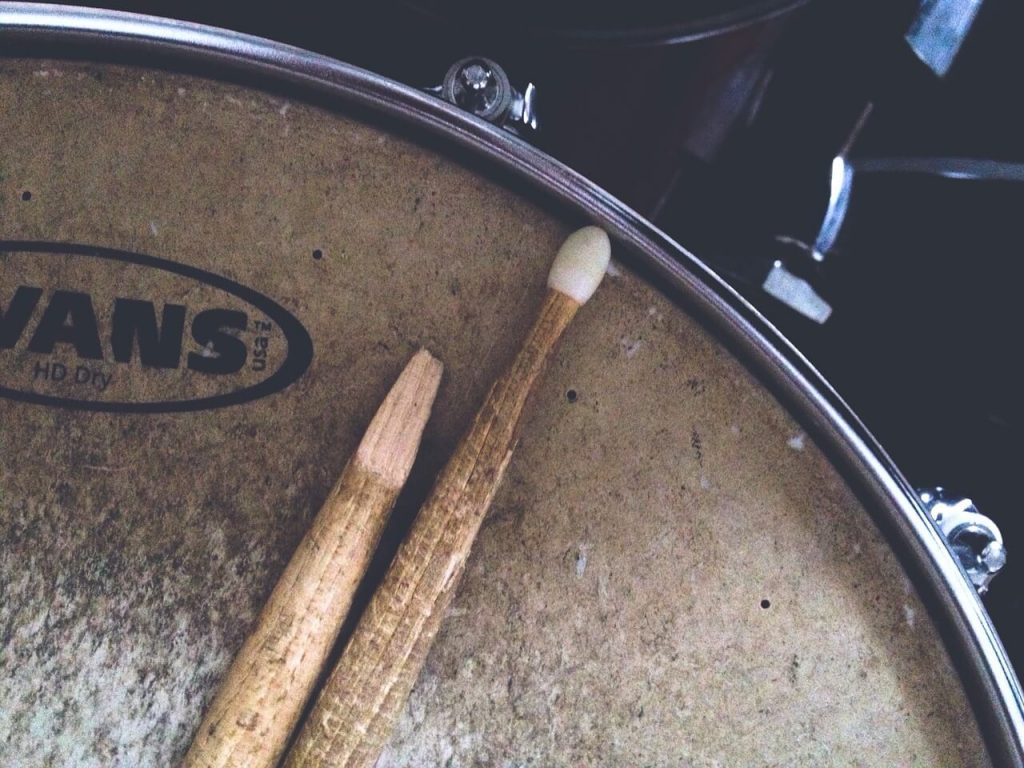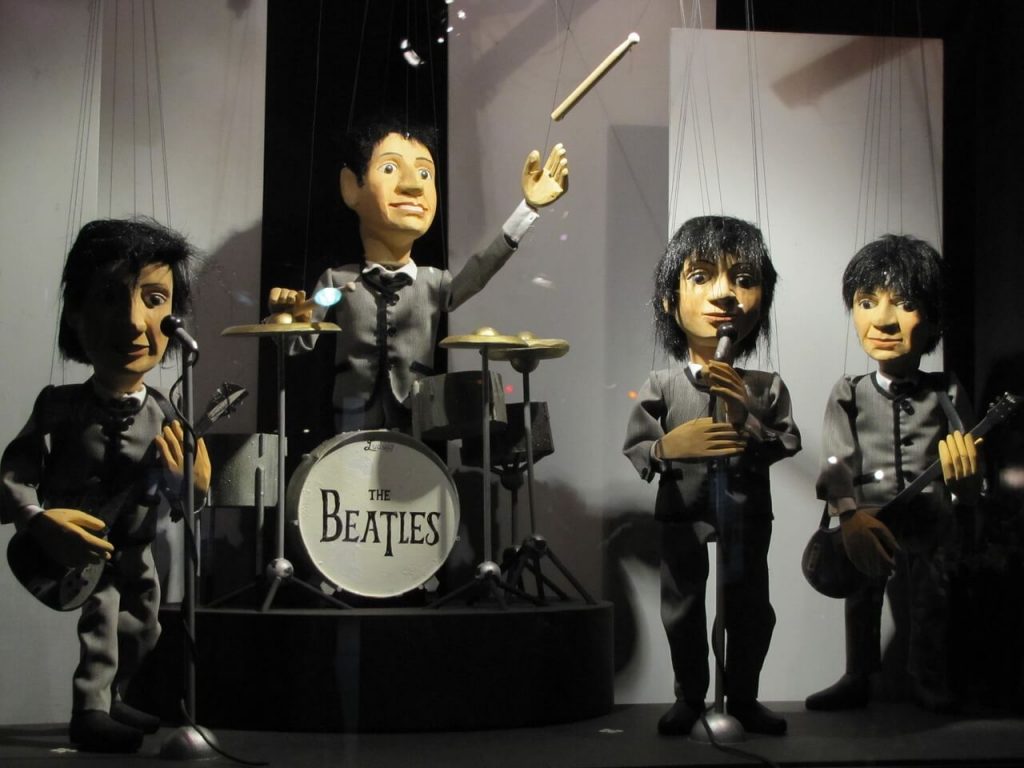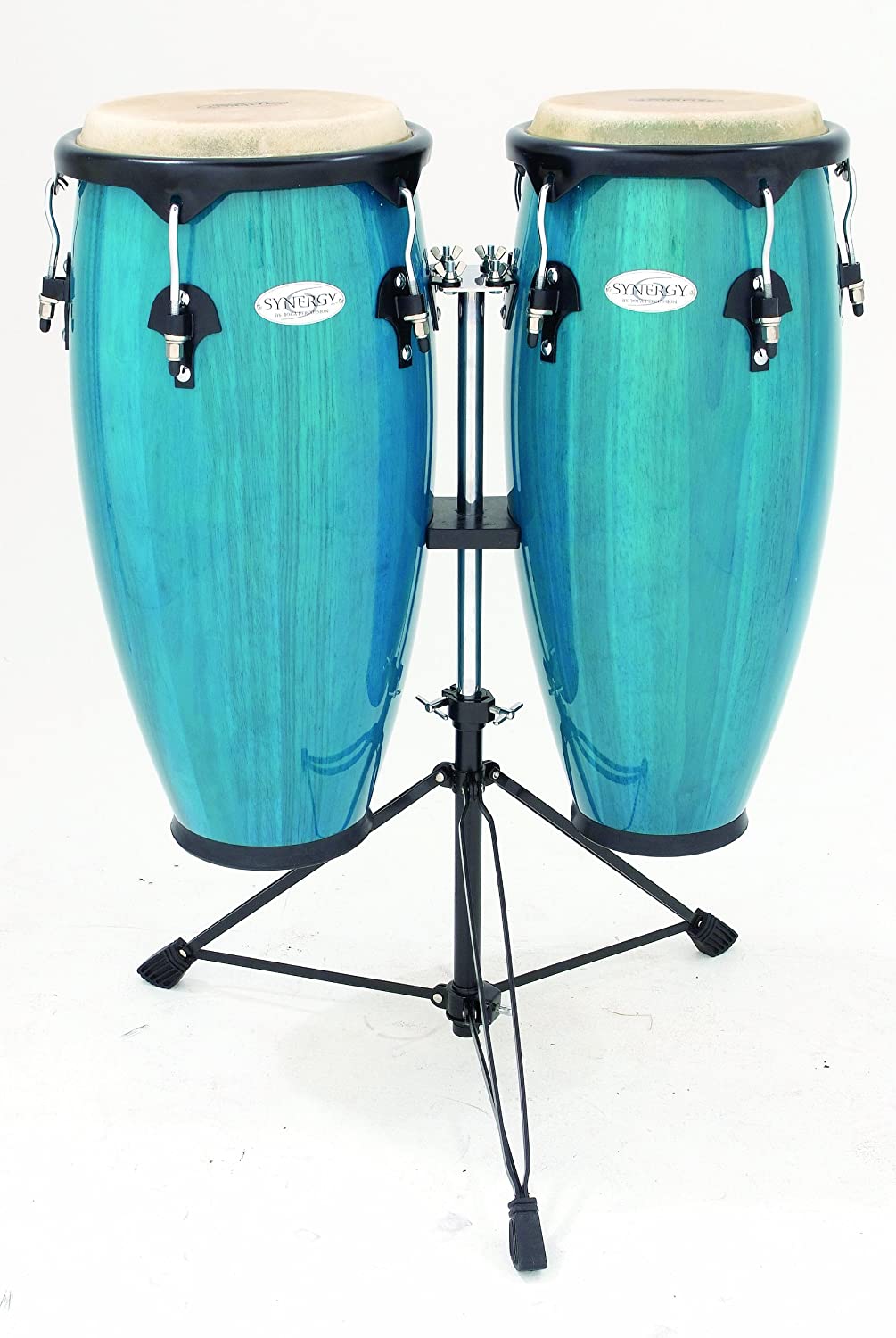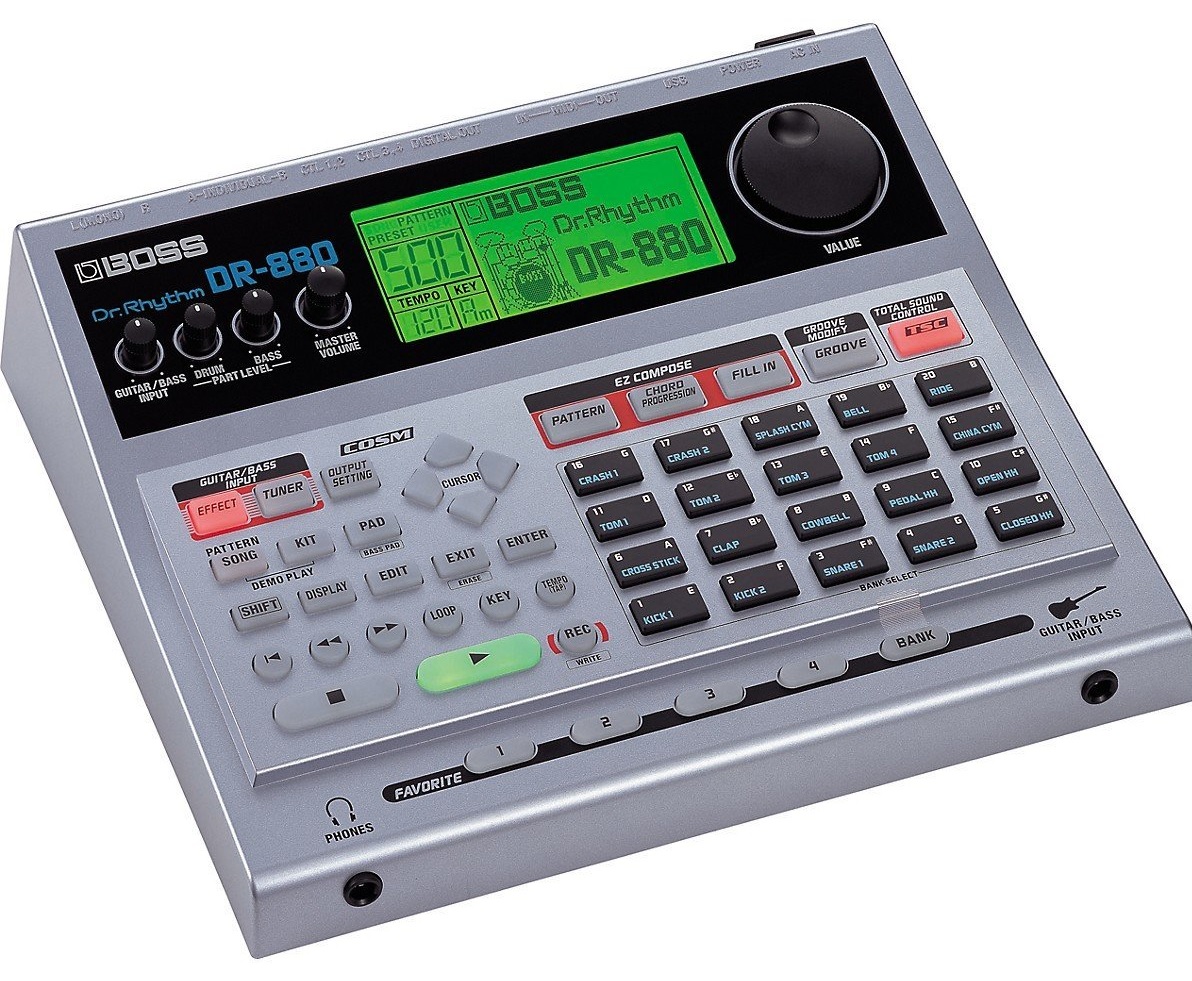Updated on March 22nd, 2022
If you‟ve just picked up your first set of sticks and are looking for a good place to start with learning drum songs, then this is the place for you.
It can be a daunting experience to try to figure out what is happening on the drums in many drum songs so this list will be structured in order of difficulty, from easy to not so easy.
We will assume that you are familiar with the names of each drum, the snare, the bass drum as well as the toms and floor toms including any array of cymbals you might have from hihat to ride cymbal and crash.

Most of the drum songs listed here use a fairly minimal setup so you can rest assured that you should have the equipment to play them in their entirety.
Terminology
Throughout the article we will often refer to different beats of the bar. Each bar is in 4/4 timing which means each bar will have a count of 4 pulses.
Get familiar with counting along with each song and say each count „1, 2, 3, 4‟ as they are happening. Complex musical terms will be kept to a minimum so as to make this list as accessible as possible to all comers.
Queen - ‘We Will Rock You’
First up is the infamous anthem by the British rock band „Queen‟. You‟ll be happy to know that this is by far one of the easiest beats to pull of on the drums.
Interestingly enough the original of this song was played at a far higher tempo, namely double time, and has a completely different feel.
This beat is made up of two bass drum strokes and a snare hit, as well as the addition of many, many hand claps. We are only concerned with the drums for now. Play two hits on the bass drum with your bass pedal. These hits should land on the first word which is „We‟.
Next the snare should be played on the word „Will‟. This beat continues in this fashion for the remainder of the drum songs. An important note is to try to play this beat steady so that it sounds like three powerful beats - bass drum, bass drum, snare.
The Beatles - ‘Ticket To Ride’
Ringo‟s playing on „Ticket To Ride‟ is simple but very effective and you can play the main pattern with just a bit of practise.
The beat begins on the bass drum and uses snare and tom for colour. Use two hands on the snare and tom for each stroke to produce a crisp and powerful hit.
The pattern goes: bass drum, snare, bass drum, bass drum, snare, tom. And that‟s it!
Of course there is a lot more to Ringo‟s playing than that simple pattern but this is the bulk of the drum songs. Take a listen to the original to hear how Ringo phrases each drum hit.
When you are comfortable with the basic pattern, then you can add frills like tom rolls and crash hits.
Primal Scream - ‘Rocks’
The drum beat in Primal Scream‟s infamous song „Rocks‟ is a very common and widely used beat. It‟s also extremely easy to master with a bit of time and concentration.
The main thrust of this beat is to play the snare on each beat. This means that when you count along to it with „1, 2, 3, 4‟ you should play the snare on each count too.
Next add the hihat along with each snare beat. You‟ll want to place your foot on the hihat pedal so as to control the hihat cymbals just enough to produce a nice sound. Pay attention to the sound on the record and try to imitate it.
When you are comfortable playing both snare and hihat on each count you can then add in the bass drum on each count too.
This gives the beat a full and rounded sound that compliments the other instruments in the band such as the bass and electric guitars.
Michael Jackson - ‘Billie Jean’
Michael Jackson‟s iconic tune „Billie Jean‟ features some of the most famous drumming of all time. The beat played in this song was performed by award winning drummer Leon “Ndugu” Chancler.
It is sometimes humorously referred to as the „money beat‟ as it is generally regarded as the beat that pays the bills for many drummers.
The makeup of this beat may be simple but to perform it as well as the original takes time and patience. Let‟s examine the beat in more detail.

As you count along with „Billie Jean‟ you should notice that the snare drum lands on counts „2‟ and „4‟. This is quite a common feature and is often referred to as a „backbeat‟. The bass drum lands on count „1‟ and count „3‟. On first attempt it is a good idea to try to play along with the song using just bass drum and snare.
Try to lock in to the rhythm and focus on accurate placement of each hit.
When you are comfortable with this rhythm you can add the final ingredient, which is the hihat. The hihat is played as „1/8th notes‟.
This simply means that they will be played evenly twice for every one count.
It‟s important that you play the hihat clean and evenly here. Use your foot to control the pedal and tighten the hihat cymbals together.
You can hear that in the original drum songs the hihats are nice and tight but not too tight!
Work on this beat and spend hours if you have to as it will form the basis for many other beats you will encounter on your journey as a drummer.
ZZ Top - ‘Gimme All Your Lovin’
The drummer on this track, Frank Beard, is known as the only member of ZZ Top for not having a beard! He‟s also known for his tasteful and complimentary drumming and this song is no exception.
The basic beat is similar in nature to the previous example in Michael Jackson‟s „Billie Jean‟. One major difference here though is that Frank plays the bass drum on all four counts of the bar.
This is sometimes called „four to the floor‟ which was originally an old jazz term for adding the bass drum to each downbeat.
A key element of this beat is the straight and consistent hihat sound. This beat sounds like a drum machine in that it is quite rigid dynamically. This is a huge component of the ZZ Top sound.
You can play the hihat closer to the edge of the cymbal in order to get a more harsh and cutting sound.
Later on in the song Frank plays some simple but tasteful fills on the toms. You can keep the bass drum pulse on all four counts going throughout these fills so as to keep the time.
Oasis - ‘Live Forever’
From Oasis‟ debut album „Definitely Maybe‟ this song is known for its iconic drum intro. It‟s also quite an easy one to play for beginners so let‟s get into it.
The beat is centred around the ride cymbal playing 1/8th notes. The concept of playing 1/8th notes is the same as in the previous two examples only in this case, instead of playing the hihat, we will play the ride cymbal.
Also instead of playing the snare on count 2 we will play a tom, preferably the floor tom.
Already this sounds like a completely different feel. Don‟t play the bass drum on each count here as the original pattern is a small bit more complex.
Take a listen to the song and you will hear that it is comprised of one bass drum on beat „1‟ and then two bass drums on beat „3‟. Each bass drum will land on a ride cymbal so use that to judge your timing. When you have the basics down you can add the additional floor tom hit just after the last ride cymbal.

Bearing in mind there are 8 ride cymbals to each bar, this would mean that this final floor tom hit will land just after the 8th ride cymbal.
As the song develops the drummer moves from playing the backbeat on the floor tom to the snare. This is because the volume increases as the guitars come in.
The White Stripes - ‘Seven Nation Army’
The drumming on „Seven Nation Army‟ by The White Stripes is ideally suited to someone new to the instrument. The song has three main sections and each section has a different drum part to be played too.
The first section is the verse and the drums come in eventually with a simple bass drum pulse. The bass drum is to be played on each count, „1, 2, 3, 4‟.
The second section is a simple build into the chorus. You can play this build using bass drum, tom and floor tom.
The rhythm is 1/8th notes so you will be playing at double the rate of the previous bass drum pulse in the verse.
This build is only short and eventually crashed into the chorus.
Listen to the guitar riff on the chorus and also to how the drum beat compliments it. The drums play a basic beat with snare on 2 and 4 and bass drum on 1 and 3.
At the end of each riff there is a tricky rhythmic pattern which is made up of two bass drums and one snare.
You can play each drum in this passage along with the crash cymbal. If you are having trouble with this beat, always take some time out to listen to the original.
Conclusion
Learning to play the drums is no different to any other instrument in that it requires some time and patience. The benefit from other instruments though is that it‟s way more fun!
Learning your favourite drum songs is a great way to build up your vocabulary on the kit and in time you won‟t have to think too much about the coordination side of things - it will become second nature to you.
Keep practising and remember, have fun!
Read also:
Mix your tracks effortlessly with the Best DAW for Beginners
7 Drumming Techniques You Need To Learn as a Beginner.
Tailor Music to Your Taste with these Best Beat Maker Software














